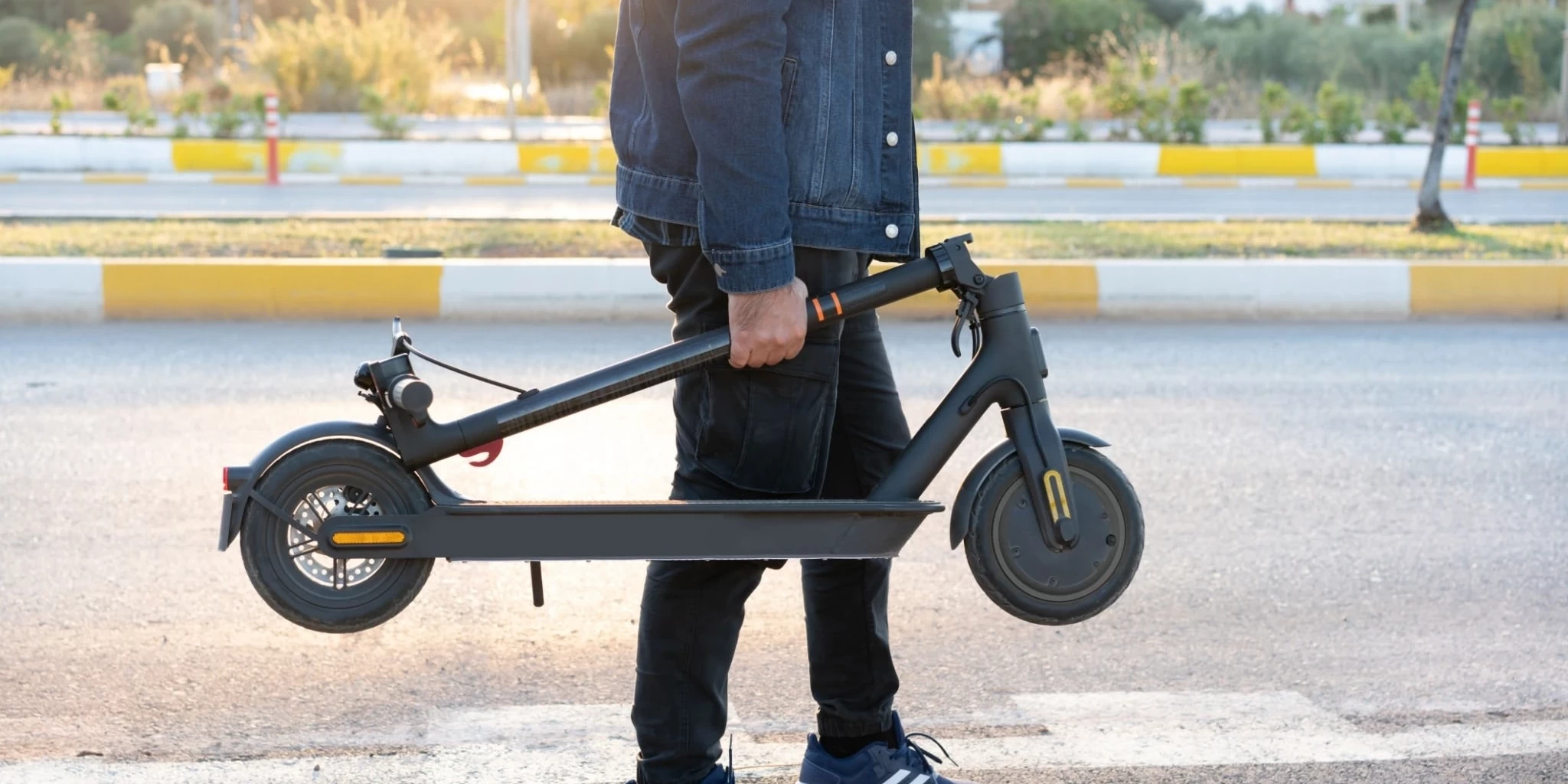Jump to:
As cities worldwide grapple with traffic congestion and air pollution, alternative transportation options such as bicycles, public transportation and e-scooters are gaining popularity. While the latter is a relatively new addition to the transportation mix, e-scooters have quickly become a favourite among commuters looking for a low-cost, convenient way to traverse cities. In this blog post, we will explore the sustainability benefits of e-scooters compared to cars and examine their environmental impact. We will also discuss the factors that affect e-scooter carbon footprints and the challenges facing e-scooter sustainability.
Economic And Environmental Impacts Of Transportation
Cars have long been associated with many economic and environmental challenges. The adverse effects of vehicles are many, from traffic congestion and air pollution to carbon emissions contributing to global warming. For this reason, governments worldwide have sought to reduce the number of cars on the road, and encourage using alternative means of transportation, such as public transportation, shared bicycles and e-scooters.
The economic and environmental impacts of cars are significant. For starters, cars are expensive to run and maintain, and their high fuel consumption drives up the cost of gasoline. Additionally, cars emit harmful gases that degrade air quality, leading to health problems like respiratory diseases and cancer. Finally, the carbon footprint of vehicles is significant, with the transportation sector accounting for more than 23% of global co2 emissions.
Sustainability Benefits Of E-Scooters
E-scooters offer several sustainability benefits that make them an attractive option for transportation. Firstly, they are inexpensive to operate and maintain and are often a more cost-effective alternative to cars and public transport. Additionally, e-scooters are environmentally friendly, as they emit zero emissions. This makes them an ideal choice for environmentally conscious commuters.
E-scooters are also convenient and can be parked almost anywhere. This makes them a viable option even in areas where parking is scarce, such as urban centres. Furthermore, e-scooters are often owned by private companies responsible for maintenance, which helps reduce the burden on local governments.

Comparing The Carbon Footprints Of E-Scooters And Cars
The numbers speak volumes when comparing the carbon footprints of e-scooters and cars. According to one study, an average car emits over 4,500 pounds of co2 annually, while an e-scooter emits only about 80 pounds.
This is because e-scooters are battery-powered and have a much smaller battery capacity than cars. Their smaller batteries require less energy, meaning less carbon emissions. Additionally, e-scooters are more efficient, as they are smaller and lighter than cars and need less power.
Factors That Affect E-Scooter Carbon Footprints
While the carbon footprint of e-scooters is significantly lower than that of cars, factors can still affect their emissions. Firstly, the type of battery used can impact the carbon footprint of an e-scooter. Traditional lithium-ion batteries are energy-intensive to manufacture and have a relatively short lifespan. However, newer battery technologies, such as solid-state batteries, are more sustainable as they require fewer raw materials and can last longer than traditional batteries.
Another factor that affects e-scooter emissions is the source of electricity used to charge them. E-scooters from power grids that rely heavily on fossil fuels may not provide significant environmental benefits. However, if e-scooters are charged using renewable energy sources such as solar or wind power, their emissions will be reduced even further.

E-Scooter Battery Technology And Sustainable Energy Sources
Improving e-scooter battery technology and promoting sustainable energy sources is crucial to reducing the carbon footprint of e-scooters. As previously mentioned, solid-state batteries are one such technology that has the potential to be more sustainable than traditional batteries. Since these batteries are made entirely of solid materials, they require fewer raw materials and are more energy-efficient.
Additionally, using renewable energy sources to charge e-scooters can significantly impact their carbon footprint. For example, some e-scooter companies have partnered with solar power producers to capture their fleets, considerably reducing their carbon footprint.
Challenges Facing E-Scooter Sustainability
Despite their many advantages, e-scooters face a few challenges that could affect their sustainability. For one, there is a need for adequate infrastructure, such as bike lanes and designated parking spots for e-scooters. This could create regulatory complexity and increase environmental impact by requiring the construction of more resources, although reducing the ecological consequences in the long term.
Additionally, e-scooters may be perceived as a nuisance or a public safety hazard, which could lead to them being banned in certain areas. Indeed, some cities have already banned e-scooters over safety concerns.
Regulations And Policies For E-Scooter Sustainability
Ensuring the sustainability of e-scooters will require a mix of regulations and policies. For instance, governments and companies that regulate e-scooters can set environmental targets regarding the carbon footprint of e-scooter operations. This could incentivise companies to adopt more sustainable practices, such as using renewable energy sources to charge their fleets.
Additionally, governments may need to introduce infrastructure improvements such as bike lanes and parking spots designated for e-scooters and bicycles.

E-scooters hold significant promise for a sustainable future. They offer a low-cost, environmentally friendly and convenient mode of transportation that can help reduce traffic congestion and carbon emissions. However, their sustainability depends on several factors, such as battery technology, energy source, infrastructure, and government policies and regulations. Overcoming these challenges will require a concerted effort from all stakeholders, from private companies to local and national governments, to ensure that e-scooters remain a sustainable transportation option for years.
Peaker
Meet Peaker, our suave electric scooter enthusiast from the charming streets of London. With a passion for sustainable urban mobility, Peaker navigates the world of electric scooters with a keen eye for style and efficiency. Whether he's zipping through the city or sharing his latest scooting adventures, Peaker is your go-to guide for all things electric and eco-friendly. Join him on the ride towards a greener, swifter future!





